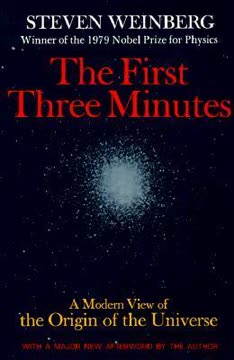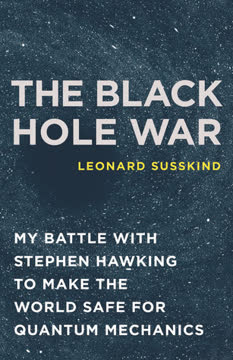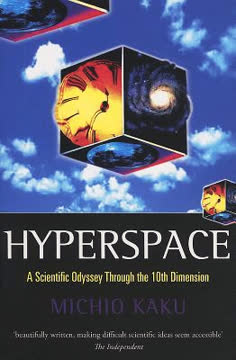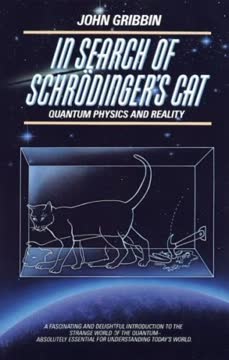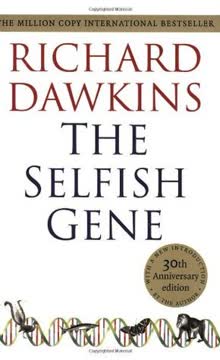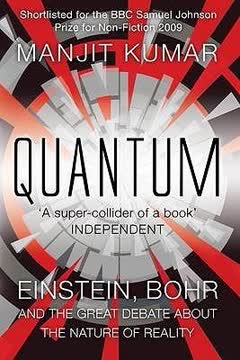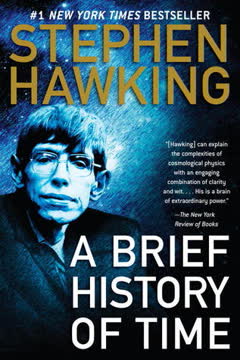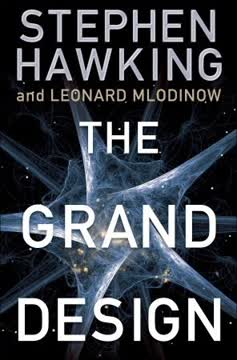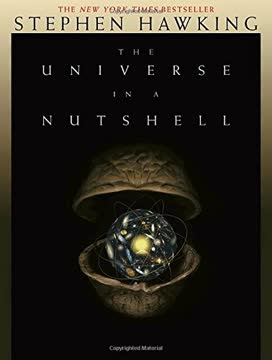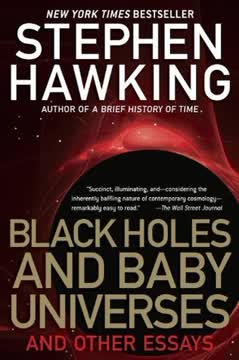النقاط الرئيسية
1. من الأساطير القديمة إلى علم الكونيات الحديث: تطور فهمنا للكون
نجد أنفسنا في عالم محير. نريد أن نفهم ما نراه حولنا ونسأل: ما هي طبيعة الكون؟ ما هو مكاننا فيه، ومن أين أتى هو ونحن؟ لماذا هو على ما هو عليه؟
التفسيرات القديمة: سعى البشر منذ زمن طويل لفهم الكون، في البداية من خلال الأساطير والمعتقدات الدينية. غالبًا ما تضمنت هذه النظريات المبكرة أرواحًا أو آلهة تتحكم في الظواهر الطبيعية.
الثورة العلمية: حلت الطريقة العلمية تدريجيًا محل التفسيرات الأسطورية، مما أدى إلى نماذج أكثر دقة للكون:
- أرسطو وبطليموس: الكون المتمركز حول الأرض
- كوبرنيكوس وغاليليو: النظام الشمسي المتمركز حول الشمس
- نيوتن: قوانين الحركة والجاذبية
- أينشتاين: نظرية النسبية
علم الكونيات الحديث: اليوم، لدينا رؤية موسعة بشكل كبير للكون، تشمل مليارات المجرات وتمتد عبر مليارات السنين الضوئية. يستمر فهمنا في التطور من خلال الملاحظة والتجربة والعمل النظري.
2. نسبية أينشتاين: ثورة في مفاهيم الفضاء والزمان والجاذبية
أدى اكتشاف أن سرعة الضوء تبدو نفسها لكل مراقب، بغض النظر عن كيفية حركته، إلى نظرية النسبية والتخلي عن فكرة وجود زمن مطلق فريد.
النسبية الخاصة: قدمت نظرية أينشتاين لعام 1905 مفاهيم ثورية:
- سرعة الضوء ثابتة لجميع المراقبين
- تمدد الزمن: الساعات المتحركة تعمل ببطء
- انكماش الطول: الأجسام المتحركة تبدو أقصر
- تكافؤ الكتلة والطاقة: E = mc²
النسبية العامة: تصف نظرية أينشتاين لعام 1915 الجاذبية كإنحناء للزمكان:
- الأجسام الضخمة تشوه نسيج الزمكان
- الكواكب تدور حول الشمس باتباع الزمكان المنحني
- تمدد الزمن الجاذبي: الزمن يمر ببطء أكثر في الحقول الجاذبية الأقوى
- الظواهر المتوقعة: الأمواج الجاذبية، الثقوب السوداء، وتوسع الكون
3. ميكانيكا الكم: كشف الطبيعة الاحتمالية للواقع على أصغر المقاييس
أشار مبدأ عدم اليقين إلى نهاية حلم لابلاس بنظرية علمية، نموذج للكون يكون حتميًا بالكامل.
الثورة الكمية: في أوائل القرن العشرين، اكتشف العلماء أن القوانين الكلاسيكية للفيزياء تنهار على المستوى الذري.
المفاهيم الأساسية لميكانيكا الكم:
- ازدواجية الموجة والجسيم: يمكن للجسيمات أن تتصرف كموجات والعكس صحيح
- مبدأ عدم اليقين: لا يمكن معرفة موقع الجسيم وزخمه بدقة في نفس الوقت
- الطبيعة الاحتمالية: يمكن فقط التنبؤ باحتمالية النتائج، وليس النتائج المحددة
- التراكب الكمي: يمكن للجسيمات أن توجد في حالات متعددة في نفس الوقت
- التشابك: يمكن للجسيمات أن تكون مترابطة عبر مسافات كبيرة
التداعيات: تتحدى ميكانيكا الكم فهمنا البديهي للواقع، مما يشير إلى كون احتمالي أساسًا على أصغر المقاييس.
4. نظرية الانفجار العظيم: تتبع أصل وتطور كوننا المتوسع
نعلم الآن أن مجرتنا ليست سوى واحدة من مئات الآلاف من المجرات التي يمكن رؤيتها باستخدام التلسكوبات الحديثة، وكل مجرة تحتوي على مئات الآلاف من النجوم.
الأدلة على الانفجار العظيم:
- توسع الكون (قانون هابل)
- إشعاع الخلفية الكونية الميكروي
- وفرة العناصر الخفيفة (الهيدروجين والهيليوم)
الجدول الزمني للكون:
- 0 ثانية: الانفجار العظيم
- 10⁻⁴³ ثانية: عصر بلانك (الجاذبية الكمية)
- 10⁻³⁵ ثانية: فترة التضخم
- 3 دقائق: بداية التخليق النووي
- 380,000 سنة: تشكيل الذرات (إعادة التركيب)
- 400 مليون سنة: تشكل النجوم والمجرات الأولى
- 13.8 مليار سنة: اليوم الحاضر
الأسئلة المستمرة: المادة المظلمة، الطاقة المظلمة، والمصير النهائي للكون تستمر في تحدي فهمنا لتطور الكون.
5. الثقوب السوداء: ظواهر كونية متطرفة حيث تنهار الفيزياء
الثقوب السوداء ليست سوداء حقًا: إنها تتوهج مثل جسم ساخن، وكلما كانت أصغر، زاد توهجها.
التكوين: تتشكل الثقوب السوداء عندما تنهار النجوم الضخمة أو تصطدم المجرات، مما يخلق مناطق تكون فيها الجاذبية قوية جدًا لدرجة أن لا شيء يمكنه الهروب.
الخصائص الرئيسية للثقوب السوداء:
- أفق الحدث: نقطة اللاعودة للضوء والمادة
- التفرد: نقطة كثيفة بلا حدود في المركز
- إشعاع هوكينغ: انبعاث نظري للجسيمات، مما يتسبب في تبخر الثقوب السوداء ببطء
- تمدد الزمن: الزمن يتباطأ بشكل كبير بالقرب من أفق الحدث
الأهمية: تتحدى الثقوب السوداء فهمنا للفيزياء، حيث تنهار النسبية العامة وميكانيكا الكم في وصف خصائصها.
6. سهم الزمن: استكشاف لماذا نختبر الزمن في اتجاه واحد
زيادة الفوضى أو الإنتروبيا هي ما يميز الماضي عن المستقبل، مما يعطي اتجاهًا للزمن.
سهم الزمن الديناميكي الحراري:
- القانون الثاني للديناميكا الحرارية: الإنتروبيا (الفوضى) تزداد مع مرور الزمن
- يشرح لماذا يمكننا تذكر الماضي وليس المستقبل
- مرتبط بتوسع الكون
أسهم الزمن الأخرى:
- النفسية: ندرك الزمن كأنه يتدفق من الماضي إلى المستقبل
- الكونية: الكون يتوسع بدلاً من الانكماش
التداعيات: يثير سهم الزمن أسئلة حول طبيعة السببية، الإرادة الحرة، وإمكانية السفر عبر الزمن.
7. توحيد الفيزياء: السعي المستمر لنظرية كل شيء
إذا وجدنا مجموعة كاملة من القوانين الأساسية، فسيظل هناك في السنوات القادمة التحدي الفكري لتطوير طرق تقريبية أفضل حتى نتمكن من تقديم تنبؤات مفيدة للنتائج المحتملة في المواقف المعقدة والواقعية.
الحالة الحالية للفيزياء:
- النموذج القياسي: يصف الجسيمات والقوى الأساسية (باستثناء الجاذبية)
- النسبية العامة: تصف الجاذبية والبنية الكبيرة للكون
محاولات التوحيد:
- نظرية الأوتار: تقترح أوتارًا صغيرة مهتزة ككتل بناء أساسية
- نظرية M: تمدد نظرية الأوتار لتشمل أبعادًا متعددة
- الجاذبية الكمية الحلقية: تحاول التوفيق بين ميكانيكا الكم والنسبية العامة
التحديات: تطوير نظرية كمية للجاذبية وشرح ظواهر مثل المادة المظلمة والطاقة المظلمة تظل أهدافًا رئيسية في الفيزياء.
8. المبدأ الأنثروبي: لماذا يبدو الكون كما هو؟
ينص المبدأ الأنثروبي الضعيف على أنه في كون كبير أو لانهائي في الفضاء و/أو الزمن، ستتحقق الظروف اللازمة لتطور الحياة الذكية فقط في مناطق محدودة في الفضاء والزمن.
مشكلة الضبط الدقيق: يبدو أن العديد من الثوابت الأساسية للطبيعة مضبوطة بدقة للسماح بوجود الحياة.
التفسيرات المحتملة:
- الصدفة: كنا محظوظين في كوننا
- التصميم: خالق ضبط الكون للحياة
- الأكوان المتعددة: كوننا هو واحد من العديد، كل منها بخصائص مختلفة
التداعيات: يثير المبدأ الأنثروبي أسئلة فلسفية حول طبيعة التفسير العلمي ودور المراقبين في الكون.
9. مستقبل الفيزياء: ما الذي ينتظرنا
حتى لو اكتشفنا نظرية موحدة كاملة، فلن يعني ذلك أننا سنكون قادرين على التنبؤ بالأحداث بشكل عام، لسببين. الأول هو القيد الذي يفرضه مبدأ عدم اليقين في ميكانيكا الكم على قدراتنا في التنبؤ. لا يوجد شيء يمكننا القيام به لتجاوز ذلك.
مجالات البحث المستمرة:
- المادة المظلمة والطاقة المظلمة
- الحوسبة الكمية والمعلومات
- الأمواج الجاذبية
- فيزياء الجسيمات بعد النموذج القياسي
التحديات التكنولوجية:
- بناء مسرعات جسيمات أكثر قوة
- تطوير كاشفات أكثر حساسية للظواهر النادرة
- تحسين الأساليب الحسابية للمحاكاة المعقدة
التداعيات الفلسفية:
- حدود المعرفة: هل سنحصل يومًا على فهم كامل للكون؟
- طبيعة الواقع: كيف تتعلق نظرياتنا بالطبيعة الأساسية للوجود؟
- دور الوعي: هل يلعب المراقب دورًا أساسيًا في ميكانيكا الكم؟
آخر تحديث::
FAQ
What's "A Briefer History of Time" about?
- Overview: "A Briefer History of Time" by Stephen Hawking and Leonard Mlodinow is a simplified version of Hawking's earlier work, "A Brief History of Time." It aims to make complex concepts in cosmology more accessible to a broader audience.
- Content Focus: The book covers fundamental questions about the universe, such as its origin, structure, and eventual fate, while explaining key scientific theories like relativity and quantum mechanics.
- Purpose: It seeks to update readers on recent developments in theoretical physics and cosmology, including string theory and the unification of forces.
- Approach: The authors use clear language and illustrations to explain scientific concepts, making it suitable for readers without a deep background in physics.
Why should I read "A Briefer History of Time"?
- Simplified Concepts: The book breaks down complex scientific theories into more understandable terms, making it ideal for those new to cosmology.
- Updated Information: It includes recent advancements in physics and cosmology, providing a current perspective on the universe's mysteries.
- Engaging Style: Hawking and Mlodinow use engaging narratives and analogies to explain scientific phenomena, making the learning process enjoyable.
- Broad Appeal: Whether you're a science enthusiast or a curious reader, the book offers insights into the universe's workings that are both enlightening and thought-provoking.
What are the key takeaways of "A Briefer History of Time"?
- Universe's Nature: The universe is vast, dynamic, and governed by laws that we are continually striving to understand, such as relativity and quantum mechanics.
- Scientific Theories: The book explains key theories like the Big Bang, black holes, and the expanding universe, highlighting their significance in understanding cosmic phenomena.
- Unified Theory Quest: It discusses the ongoing quest for a unified theory that combines all fundamental forces of nature, including gravity, electromagnetism, and nuclear forces.
- Role of Time: Time is not absolute but relative, intertwined with space, and affected by gravity, challenging our traditional perceptions.
How does "A Briefer History of Time" explain the Big Bang theory?
- Origin of the Universe: The Big Bang theory posits that the universe began as a singularity, a point of infinite density and temperature, about 13.7 billion years ago.
- Expansion: Following the Big Bang, the universe expanded rapidly, cooling as it grew, leading to the formation of fundamental particles and eventually atoms.
- Cosmic Microwave Background: The book explains how the residual radiation from the Big Bang, known as the cosmic microwave background, provides evidence for this theory.
- Inflationary Model: It introduces the concept of inflation, a rapid expansion that smoothed out the universe's initial irregularities, leading to the large-scale structure we observe today.
What is the significance of black holes in "A Briefer History of Time"?
- Definition: Black holes are regions in space where gravity is so strong that nothing, not even light, can escape from them.
- Formation: They form when massive stars collapse under their own gravity, creating a singularity surrounded by an event horizon.
- Scientific Importance: Black holes challenge our understanding of physics, particularly in the realms of general relativity and quantum mechanics.
- Research and Observation: The book discusses how black holes are studied through their effects on nearby matter and radiation, providing insights into the universe's extreme conditions.
How does "A Briefer History of Time" address the concept of time travel?
- Relativity and Time: The book explains how Einstein's theory of relativity allows for the possibility of time travel, at least theoretically, by affecting the flow of time.
- Wormholes: It introduces the concept of wormholes, hypothetical passages through space-time that could potentially allow for travel between different points in time.
- Scientific Challenges: While time travel is a popular science fiction theme, the book discusses the scientific challenges and paradoxes, such as causality issues, that make it unlikely with current understanding.
- Chronology Protection: Hawking's idea of chronology protection suggests that the laws of physics may prevent time travel to avoid paradoxes, maintaining the universe's logical consistency.
What role does quantum mechanics play in "A Briefer History of Time"?
- Fundamental Theory: Quantum mechanics is presented as a fundamental theory that describes the behavior of particles at the smallest scales, where classical physics fails.
- Uncertainty Principle: The book explains Heisenberg's uncertainty principle, which states that certain pairs of properties, like position and velocity, cannot be simultaneously known with precision.
- Wave-Particle Duality: It discusses the dual nature of particles, which exhibit both wave-like and particle-like properties, challenging traditional notions of matter.
- Quantum Gravity: The quest for a quantum theory of gravity, which would unify general relativity and quantum mechanics, is highlighted as a major goal in modern physics.
How does "A Briefer History of Time" explain the unification of forces?
- Four Fundamental Forces: The book outlines the four fundamental forces: gravity, electromagnetism, the weak nuclear force, and the strong nuclear force.
- Electroweak Unification: It describes how the electromagnetic and weak nuclear forces have been unified into a single electroweak force at high energies.
- Grand Unified Theories (GUTs): The book discusses attempts to unify the electroweak force with the strong nuclear force, though gravity remains separate.
- String Theory: String theory is introduced as a potential framework for unifying all forces, suggesting that particles are one-dimensional strings rather than point-like entities.
What are the best quotes from "A Briefer History of Time" and what do they mean?
- "The boundary condition of the universe is that it has no boundary." This quote reflects the idea that the universe is self-contained and finite, yet without edges or singularities, challenging traditional concepts of beginnings and endings.
- "We see the universe the way it is because we exist." This statement encapsulates the anthropic principle, suggesting that the universe's conditions are such that they allow for the existence of observers like us.
- "Equations are more important to me, because politics is for the present, but an equation is something for eternity." This quote from Einstein, included in the book, highlights the timeless nature of scientific discovery compared to the transient nature of human affairs.
- "If we find the answer to that, it would be the ultimate triumph of human reason—for then we would know the mind of God." This reflects Hawking's view that understanding the universe's fundamental laws would be akin to understanding the divine, emphasizing the profound nature of scientific inquiry.
How does "A Briefer History of Time" address the concept of a unified theory?
- Ultimate Goal: The book presents the search for a unified theory as the ultimate goal of physics, aiming to explain all fundamental forces and particles within a single framework.
- Historical Context: It traces the history of attempts to unify forces, from Newton's laws to Einstein's relativity and beyond, highlighting the progress and challenges faced.
- Current Theories: String theory and supergravity are discussed as leading candidates for a unified theory, though neither is complete or fully proven.
- Philosophical Implications: The pursuit of a unified theory raises philosophical questions about the nature of reality, the role of a creator, and the limits of human understanding.
What is the significance of the anthropic principle in "A Briefer History of Time"?
- Definition: The anthropic principle suggests that the universe's laws and constants are as they are because they allow for the existence of observers like us.
- Weak vs. Strong: The book distinguishes between the weak anthropic principle, which applies to specific regions of the universe, and the strong anthropic principle, which posits multiple universes or regions with varying laws.
- Implications for Science: It challenges scientists to consider why the universe's conditions are just right for life, influencing theories about the universe's origin and structure.
- Criticism and Debate: The anthropic principle is controversial, with some viewing it as a tautology or a philosophical rather than scientific explanation.
How does "A Briefer History of Time" explain the nature of scientific theories?
- Model of the Universe: A scientific theory is described as a model that explains a wide range of observations and makes predictions about future events.
- Provisional Nature: The book emphasizes that scientific theories are always provisional, subject to revision or replacement as new evidence emerges.
- Criteria for Good Theories: A good theory should be simple, consistent, and able to make testable predictions, allowing it to be falsified if incorrect.
- Role of Theories: Scientific theories help us understand the universe's workings, guiding research and expanding our knowledge of the natural world.
مراجعات
يُعتبر كتاب "تاريخ موجز للزمن" مقدمة ميسرة لمفاهيم الفيزياء المعقدة لغير العلماء، وقد نال استحسانًا واسعًا. يقدر القراء توضيحات هوكينج الواضحة وحماسه، رغم أن البعض يجد أجزاءً منه تحديًا. يغطي الكتاب موضوعات مثل النسبية، وميكانيكا الكم، وعلم الكونيات. يوصي العديد من المراجعين به لأولئك الذين لديهم فضول حول الكون، مشيرين إلى أنه يثير الدهشة ويوسع الفهم. يقترح البعض أنه الأنسب لطلاب المدارس الثانوية أو البالغين الذين يسعون للحصول على نظرة عامة بسيطة على نظريات الفيزياء الحديثة.
Similar Books

